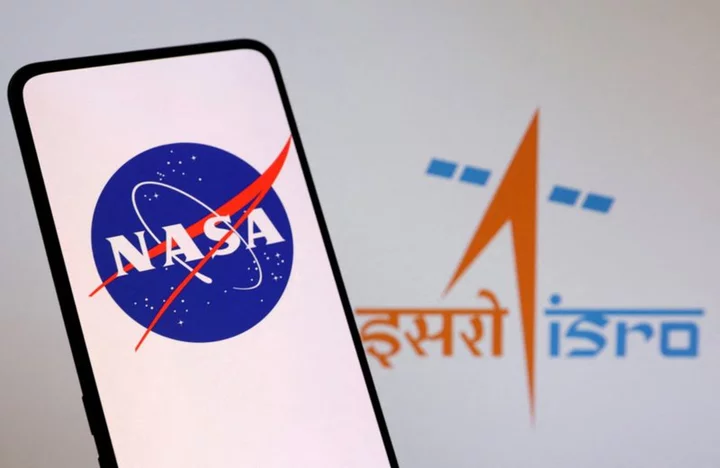Scientists develop powerful ‘pulses’ that can induce immediate ‘hibernation’ – and it could help us explore space
Scientists have developed new ultrasound technology that can induce immediate “hibernation”, they say. The system can be aimed at the head and bring on “torpor” a state similar to hibernation where mammals suppress their metabolism, reduce their body temperature and slow down other processes. The researchers behind the new system successfully brought it on in mice and rats, after pointing the ultrasound pulses at the animals’ heads. They suggest that it could work in humans – and might have important applications for long-distance space flight or medicine, they say. While further work is needed to understand how it might work on people, they suggest that it could be used when people have experienced acute emergencies or severe disease, for instance. If someone is in a car accident, for instance, they could essentially be put on ice until their organs are used for transplantation, for instance. It might also be useful in long journeys through space, where it would help reduce the amount of resources that people might stay alive if they are travelling to Mars or other distant locations. Mammals and birds keep high body temperatures and burn through a lot of energy. That characteristic is useful host of ways, but almost means that they require a lot of food and other resources. Some animals are able to limit the drawbacks of that situation by inducing torpor, which turns down many of those processes. It means that they use less energy, but are able to come back to living as normal after, without damage to their body. Humans are not able to do that. But if they were, it would be incredibly useful – which has led to the search for a noninvasive, safe and reliable way of inducing that state. The scientists found that directing ultrasound pulses at mice’s heads for around 10 seconds brought on the same conditions as torpor, with their heart rate slowing, their body temperature cooling and their metabolism slowing. They also built a special system that was able to measure that body temperature and send more of those pulses if a mouse appeared to be coming back to normal. Without that, however, the mice would wake back up again, returning to normal metabolism and body temperature. There are still a host of dangers, however. Experiments have shown that it is dangerous to bring animals back from those deep “torpid” states, and that they might not recover. If the mice were in cold environments, for instance, they did not spontaneously wake up. And any experiments in humans would be at risk of repeating those safety issues for people. The work is described in a new paper, ‘Induction of a torpor-like hypothermic and hypometabolic state in rodents by ultrasound’, published in Nature. Read More Apple lays bare danger of losing your health data What is Twitter Spaces and why did it go so wrong during DeSantis’s 2024 launch? Electric car range set to double with first production of breakthrough battery Apple lays bare danger of losing your health data What is Twitter Spaces and why did it go so wrong during DeSantis’s 2024 launch? Electric car range set to double with first production of breakthrough battery
Scientists have developed new ultrasound technology that can induce immediate “hibernation”, they say.
The system can be aimed at the head and bring on “torpor” a state similar to hibernation where mammals suppress their metabolism, reduce their body temperature and slow down other processes.
The researchers behind the new system successfully brought it on in mice and rats, after pointing the ultrasound pulses at the animals’ heads.
They suggest that it could work in humans – and might have important applications for long-distance space flight or medicine, they say.
While further work is needed to understand how it might work on people, they suggest that it could be used when people have experienced acute emergencies or severe disease, for instance. If someone is in a car accident, for instance, they could essentially be put on ice until their organs are used for transplantation, for instance.
It might also be useful in long journeys through space, where it would help reduce the amount of resources that people might stay alive if they are travelling to Mars or other distant locations.
Mammals and birds keep high body temperatures and burn through a lot of energy. That characteristic is useful host of ways, but almost means that they require a lot of food and other resources.
Some animals are able to limit the drawbacks of that situation by inducing torpor, which turns down many of those processes. It means that they use less energy, but are able to come back to living as normal after, without damage to their body.
Humans are not able to do that. But if they were, it would be incredibly useful – which has led to the search for a noninvasive, safe and reliable way of inducing that state.
The scientists found that directing ultrasound pulses at mice’s heads for around 10 seconds brought on the same conditions as torpor, with their heart rate slowing, their body temperature cooling and their metabolism slowing.
They also built a special system that was able to measure that body temperature and send more of those pulses if a mouse appeared to be coming back to normal.
Without that, however, the mice would wake back up again, returning to normal metabolism and body temperature.
There are still a host of dangers, however. Experiments have shown that it is dangerous to bring animals back from those deep “torpid” states, and that they might not recover.
If the mice were in cold environments, for instance, they did not spontaneously wake up. And any experiments in humans would be at risk of repeating those safety issues for people.
The work is described in a new paper, ‘Induction of a torpor-like hypothermic and hypometabolic state in rodents by ultrasound’, published in Nature.
Read More
Apple lays bare danger of losing your health data
What is Twitter Spaces and why did it go so wrong during DeSantis’s 2024 launch?
Electric car range set to double with first production of breakthrough battery
Apple lays bare danger of losing your health data
What is Twitter Spaces and why did it go so wrong during DeSantis’s 2024 launch?
Electric car range set to double with first production of breakthrough battery









